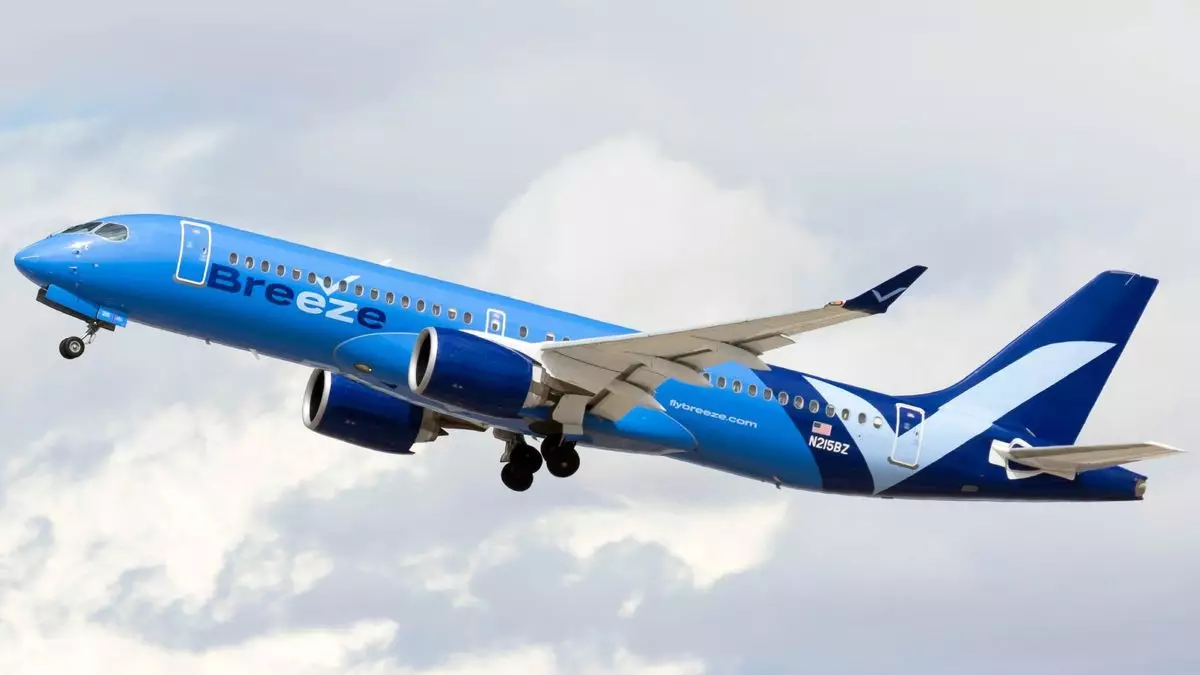Breeze Airways, a low-cost carrier, embarked on its journey in May 2021, aimed at transforming the airline industry with a focus on underserved markets and affordable travel options. After a long and winding road, the airline recently announced its first-ever quarterly operating profit for the fourth quarter of 2024, igniting enthusiasm and optimism within the company. CEO David Neeleman expressed his belief that Breeze has turned a pivotal corner in its operational journey, setting the stage for more robust financial performance in the coming years.
The transition to profitability has been anything but smooth for Breeze Airways. Ahead of the latest announcement, the airline’s financial reports painted a picture of struggle, reflecting negative margins and significant losses over the previous quarters. The most telling statistic was the staggering negative operating margin of 20.9% in the third quarter of 2023 and a loss of $33.6 million. The grim assessment of a negative operating margin of 25.9% in the fourth quarter highlighted the magnitude of the challenges the airline faced.
However, the recent revelation of more than $200 million in revenue, leading to a commendable operating margin exceeding 4%, marked a transformative period for Breeze. Even a modest profit is a huge leap for an airline that has been navigating the headwinds of a competitive industry landscape. David Neeleman characterized this operating profit as “pretty significant,” signaling a positive turnaround that captures both internal milestones and industry trends.
A prosperous backdrop in the airline industry has aided Breeze’s recovery journey. In recent months, travelers have shown an eagerness to pay higher fares, particularly for premium services, a trend that Breeze has strategically capitalized on. With its fleet of Airbus A220s, the airline has diversified its seating options—offering 12 first-class seats, 45 extra legroom seats, and 80 standard economy seats. This ability to cater to different segments has placed Breeze in a favorable position to attract a wide range of customers.
The airline reported significant growth in its operational footprint, expanding to 66 destinations by adding 29 new locales last year and increasing its capacity by an impressive 52%. Such growth was not merely a reflection of its ambitions but also a necessary reaction to a market that is constantly evolving and expanding. Furthermore, as more consumers become aware of Breeze’s offerings—thanks to increased route frequency and sustained service—financial stability has slowly begun to take root.
One of Breeze’s key differentiators is its unique operational model centered around connecting city pairs that lack direct service from other major airlines. By focusing on smaller airports, Breeze has positioned itself as the primary carrier in 24 of its operational markets and stands as the sole airline on 87% of its routes. This strategic focus enables Breeze to avoid the fierce competition prevalent at larger airports dominated by legacy carriers.
While it has witnessed notable momentum, the airline must manage its growth judiciously to avoid the pitfalls seen by similar low-cost competitors. Avelo Airlines, which operates on a similar premise and launched around the same time, achieved profitability ahead of Breeze. Analysts argue that sustained operational excellence and consistent profit margins are crucial in maintaining investor confidence and ensuring long-term viability.
As the airline approaches what it describes as a newfound stability, two significant areas for improvement loom large: regulatory approval for international flights and enhancing its on-time performance. Neeleman has indicated plans to initiate international routes between mid-sized U.S. cities and regions in Mexico, Central America, and the Caribbean going forward. Although long-haul services such as flights to Ireland are on the horizon, they will likely evolve gradually.
The past year has seen Breeze’s on-time performance hover at a meager 69.6%. Recognizing the impact of reliability on customer satisfaction and loyalty, the management has initiated various strategies aimed at enhancing performance metrics. This includes improved turnaround times—an essential area where efficiency can translate into better service and increased revenues.
The path to achieving consistent profitability has taken longer than Neeleman anticipated—approximately 18 months. Despite early financial strains, the CEO appears optimistic about Breeze’s future, celebrating the strides made and expressing confidence in the airline’s trajectory. While cash reserves at the end of last year’s third quarter were $110.7 million, improved cash flow positions the airline favorably against the backdrop of looming uncertainties.
Breeze Airways represents not only a case study of challenges within the competitive airline industry but also a narrative of hope and resilience. With a solid strategy, an evolving operational model, and increasing consumer recognition, Breeze is set to soar into the future, turning obstacles into opportunities and navigation the complexities of the aviation market with renewed confidence.


Leave a Reply